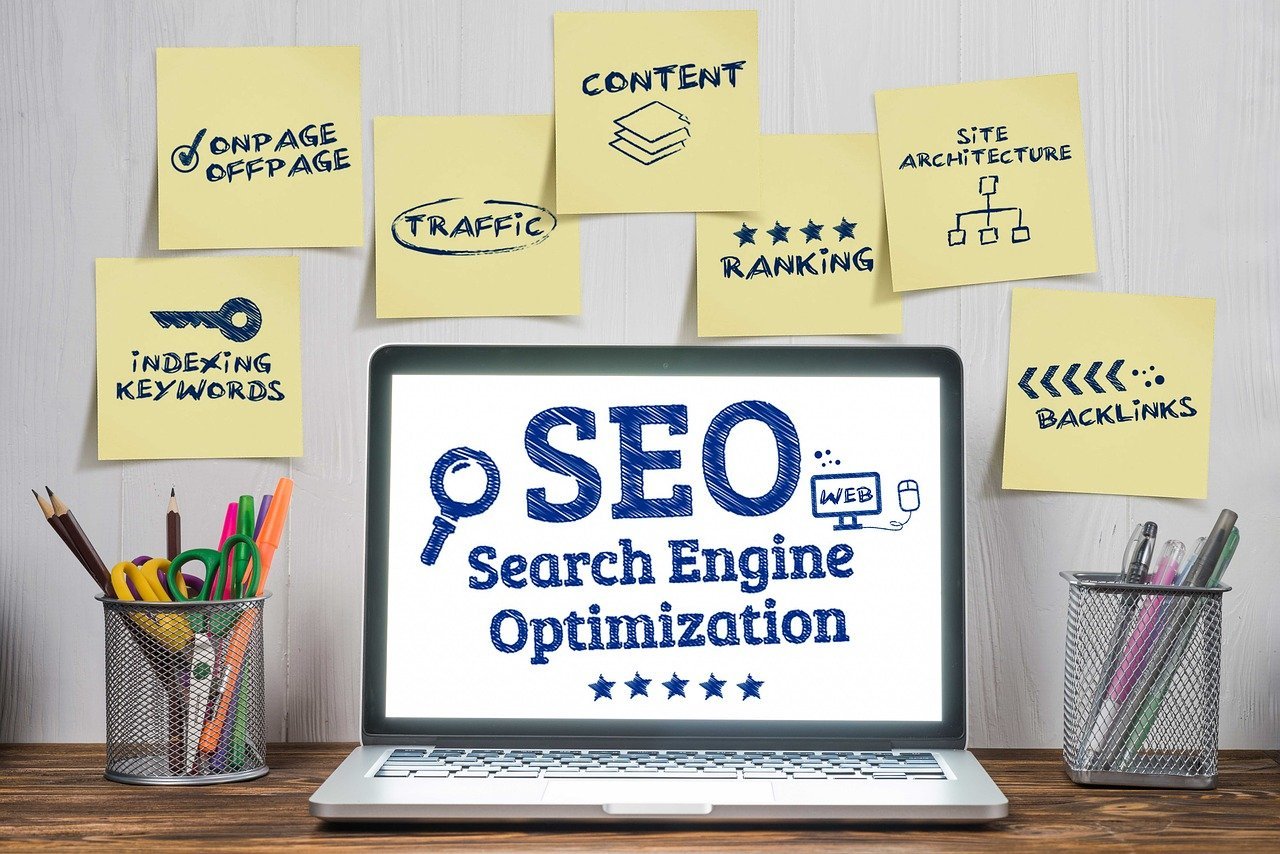Although the basis and cornerstone of SEO is content, other vital factors influence its efficiency as well. And that is where the seemingly worrisome term that is technical SEO comes into our story. After all, you can’t really hope to win against search engines and your online competitors without getting technical. That is precisely what brings us here today – the pursuit of making your moving company SEO even stronger and more resistant. The way to achieve this is by exploring some simple yet potentially game-changing aspects of technical Search Engine Optimization elements. So, let’s start digging into it.
We start from the basics – what is technical SEO?
As I already noted in the beginning, the foundation of all SEO is in creating quality content that answers the needs of visitors and search engines. However, even the best content can do little if it doesn’t have the technical support to stand out to search engines algorithms and online readers. Hence the need for functional optimization. This form of SEO focuses on the non-content aspects of your optimization efforts.

How does it all work?
When we dissect the overall SEO development efforts that companies take, we come across three action plans:
- On-Page SEO – the heart. The aspect that focuses on how well your website content is optimized in the eyes of visitors and search engines. The primary deciding factor here is in the keyword you use and just how well the content entails that keyword.
- Off-Page SEO – the skin. Here, we have a more external way of looking at things, with a focus on inbound links from other relevant and authoritative sites. Usually recognized as backlink profile building – off-page optimization carries a significant role in the long-term positioning of your website.
- Technical SEO – the brain. Finally, we come across the “neural network” that brings it all to life and helps your content in terms of recognition. What we have here is optimization focused on answering the requirements of search engine algorithms and page indexing standards. Although most consider it as part of on-page optimization, the truth is that it has grown into an independent set of regulations that websites have to abide by to gain higher rankings.
Why all that need to satisfy the technical requirements?
The goal of Google and all other search engines is to provide people online with the best answer to their inquiry. And to accomplish that, complex Google algorithms need to crawl through countless pages of content, evaluating the best one based on a multitude of factors. While some of those factors focus on user experience, others will be more oriented towards page loading speed, or data structure, etc. As a conclusion of this mechanism, the more of those needs your website satisfies, the better off you will be in terms of online ranking.
What technical SEO does is examine the functionality of your website from the perspective of search engines. The process serves to help you discover potential flaws and errors in your site setup, as well as identify space for improvement of existing content. On the one hand, the penalty for not doing so can end up costing you a lot in terms of positioning well in search results. However, if you choose to abide by these optimization guidelines, you can end up rewarded for your efforts with top rankings.
But I don’t want you going off, thinking how you are doing all this out of sheer necessity to please some algorithm. No, what you are creating here is a strong technical foundation often coincides with a better experience for both users and search engines.
What are the technical metrics your website should meet?
The very definition of a proper website is one that carries the promise of optimal user experience through speed, all the while easily accessible to search engine algorithms. That means that the technical layout of your website needs to simplify the purpose of your website to search engines. It should offer a fast and practical answer to online queries of users while eliminating any chances of broken links, duplicate content, cyber-attacks, etc. So, what are the 8 essential metrics that your technical SEO needs to tackle?
1. The page loading speed
Everything revolves around speed when it comes to online searches and user experience. And when you have studies that show that over 50 percent of people will leave sites if the page loading speed is over 3 seconds, this is no surprise. That means missing out on a whole lot of organic traffic, and potential moving leads for your business. And why? Because you failed to tend to the technical SEO metrics of your site and people left due to frustration.

What’s worse is that once things like this happen, Google also considers them. Next thing you know, your web page drops in search rankings despite the quality content on it – all because of a lack of speed. The good news here is that you can quickly test your page loading speed. There are website marketing analysis tools that you can use to learn how to improve your website speed best.
2. How crawlable it is for search engines
To analyze and crawl through your website, search engines use robots. These robots follow different links on your site to get the best image regarding the overall quality of the content on it. So, the better the link structure on your website is, the more understandable the content is to search engine robots. However, if there are certain links that you don’t want to be included in the crawl process, you also have the option to block robots from getting there.
The robots.txt file is one of the tools to use in your technical SEO
This tool serves to provide search engine robots with directions to guide them through your website. However, with powerful tools such as this, a specific dose of caution is always advised. If you’re not careful with using the robots.txt file, you can easily block your sites CSS and JS files. And if you block these particular files, you won’t be able to signal browsers what your site is supposed to look like or how it works. That is why your best bet would be to hire a professional company for SEO.
The meta robots tag
This is a piece of code that your typical site visitors are unable to see. Basically, it’s in the source code – in the head section of pages. This section is what robots read when searching for a particular page. So, if you want robots to crawl a specific page but keep it away from search engine results for one reason or the next, you can accomplish this with the meta robots tag.
3. The presence of dead links
I already mentioned just how damaging slow websites could be to your rankings. However, what’s even worse than a slow loading page is a page that no longer exists. In other words, what we’re talking about here is a 404 error page. In addition to messing with user experience, 404 pages also get noticed by search engines. And once they come across one dead link, they tend to keep crawling for other dead links. As you might imagine, this can reflect poorly on your technical SEO efforts.

However, there is a way to prevent this from happening. And that is to take notice of any changes that you make to existing URLs. To avoid unwanted dead links, you need to always make sure to redirect a URL after deleting or changing it. Ideally, you should redirect it to a page that serves to replace the old one, and you can use 301 redirects to do so.
4. No duplicate content to confuse search engines
For a website with multiple pages and numerous posts, there is nothing that can damage your website value more than duplicate content. Although site visitors might not find this problematic, Google and other search engines would disagree. According to SEO standards, having duplicate content is one of the prime reasons for devaluating a page or an entire website. And this is precisely what you want to avoid with the help of technical SEO.
The solution is simple. All you need is the so-called canonical link, to indicate to search engines the original page. And that page will be the one that search engines rank. Yoast makes it even simpler to set canonical URLs for pages.
5. The security of your website
A website that is rich in technical SEO is a website that is secure. Once you master how to improve your website security, you are on your way to ensure a strong online presence. And ensuring the privacy of your visitors and the protection of their sensitive data is one of the necessities of having a reliable website. Although there are plenty of means to make this happen, implementing HTTPS is one of the best ways to achieve this.

HTTPS is there to ensure that no one can intercept the data flow between users and websites. That way, if anyone were to log in on your website or submit a quote form, or make a purchase, their credentials would remain protected. And for Google, this level of protection is something of a must-have. That is why secure websites will always rank higher than those without HTTPS. The simplest way to check this is by checking the URL of your website.
6. The data on your site should be structured to match technical SEO standards
Structured information is what defines your website and what it stands for to search engines. It helps algorithms understand your website, the content on it, and your business. Structured data describe your services or products to search engine robots and helps them better understand and rank what you are offering. Additionally, structured data makes your content eligible to appear in rich results – the results with ranking stars under them, making them stand out.
7. The existence of an XML sitemap
Every website needs a visible and easy-to-navigate structure. An XML sitemap is basically a roadmap of all the pages/posts on your site. It helps make the analysis of your website easier for both search engines and users. XML sitemaps are usually organized in accordance with posts, pages, tags, categories, etc. Although having an XML sitemap is not a necessity, it is a recommended commodity. That is why we recommend having one always.
8. If you have an international site, you will want a hreflang to enrich your technical SEO
Targeting countries with different mother tongues require specified adjustments to your website. You need to make sure that search engines understand that your site targets more than one country with its own language. That is when you require hreflang tags. These are tags that help define which country and language a certain page is meant for. And it also helps you to eliminate the duplicate content obstacle in cases where you have the same content for different regions such as the US and Australia.
The conclusion to our little guide
And there you have it – a short insight into the secrets of technical SEO from the expertise of Movers Development. However, as the title of this post states – this is what one might consider a beginner’s guide into this vast area. To truly master the inner working of SEO in all ways, you need to put in the time and energy. Or if you think you don’t really have the time to achieve it all, but want to reap the benefits of it all, you need only turn to the professionals.
Our company provides a wide range of services to ensure the full optimization and valuation of your website. And it all starts from a phone call and a free consultation. For more interesting information, feel free to check out some of the other posts on our site. Make your business better with minimal effort!






